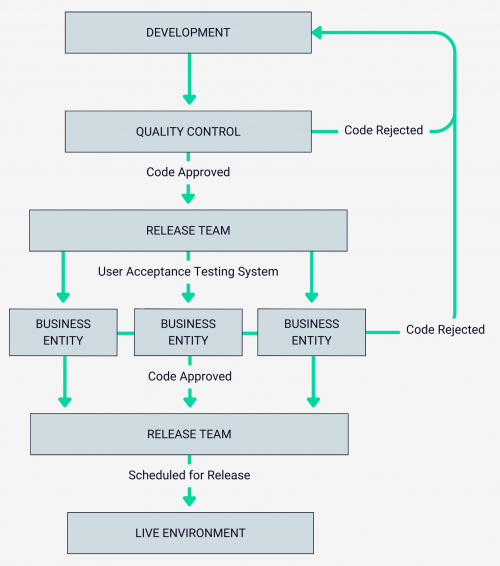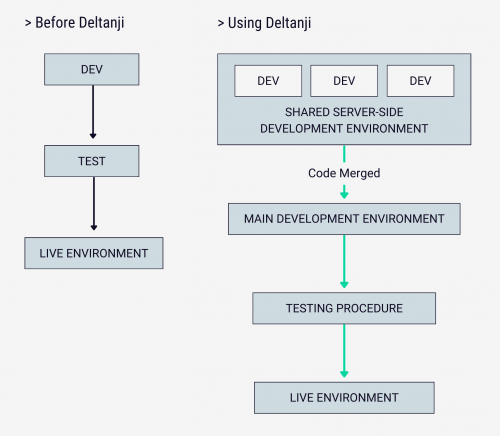Deltanji CASE STUDY
Effective source control for healthcare
Deltanji Case Study
Effective source control
for healthcare
Deltanji Case Study
Effective source control
for healthcare

Sonic Healthcare is the leading specialist provider in pathology, radiology, general practice, and corporate medical services. With headquarters in Australia, they have operations spanning Australasia, Europe, and North America.
Using an effective source control solution has allowed them to manage complex codebases, facilitate seamless collaboration within development teams, and streamline deployment processes.
Sonic Healthcare is the leading specialist provider in pathology, radiology, general practice, and corporate medical services. With headquarters in Australia, they have operations spanning Australasia, Europe, and North America.
Using an effective source control solution has allowed them to manage complex codebases, facilitate seamless collaboration within development teams, and streamline deployment processes.
One of the reasons we enjoy working with Deltanji is that it is InterSystems native, so it understands InterSystems file types. In my experience, generic source control solutions require a lot more configuration.
Sonic Healthcare's set up
Sonic Healthcare implemented Deltanji source control in 1999 and it has become an integral part of their system. They work with InterSystems IRIS and InterSystems IRIS for Health, using Deltanji server-side for code management and to optimize their software development and release processes. As a result, Deltanji has enabled them to streamline their release workflows and achieve close control over their overall software lifecycle.
Sonic Healthcare has a diligent deployment process and needs to ensure that all code changes are managed consistently and productively.
Their setup requires code from the Development Team to be passed through Quality Control and moved through to the User Acceptance Testing System, where individual business entities perform end-user testing. Once they have signed off the development task, the Release Team then commit the code to the repository and schedule to release to the live environment.
This entire process is managed using Deltanji Enterprise and leverages Deltanji’s configurable workflow process. It enables Sonic Healthcare to go beyond traditional CI/CD and is done easily and effectively due to Deltanji’s tight integration with InterSystems platforms.

The impact of using Deltanji
Configurability
Deltanji’s configuration capabilities have provided Sonic Healthcare with a source control solution that can be tailored to their specific requirements. Over the 20+ years Sonic Healthcare has been using Deltanji, it has evolved to fit the growing and changing needs of the organization. For example, Deltanji has enabled Sonic Healthcare to use a highly granular approach to branching, allowing users to work in development environments on a shared server-side development system simultaneously before changes are checked back into the main development environment.
Their setup requires code from the Development Team to be passed through Quality Control and moved through to the User Acceptance Testing System, where individual business entities perform end-user testing. Once they have signed off the development task, the Release Team then commit the code to the repository and schedule to release to the live environment.
This entire process is managed using Deltanji Enterprise and leverages Deltanji’s configurable workflow process. It enables Sonic Healthcare to go beyond traditional CI/CD and is done easily and effectively due to Deltanji’s tight integration with InterSystems platforms.

Centralized Environment
In order to optimize its code deployment processes, Sonic Healthcare adopted the use of Deltanji’s Task Server technology. Deltanji’s hub centric architecture plays a vital role in the success of using Task Server for deployment, as it provides version control and easy tracking of the status/location of code which provides clear visibility of code versions on target servers, and, with the rollback functionality, risks are mitigated. These features are essential to increasing control, reliability, and confidence in their system, as well as enabling faster deployment times.
Alignment with InterSystems IRIS
Deltanji has tailored specifically for InterSystems technology. This has resulted in it excelling in managing InterSystems file types which is a key reason why Sonic Healthcare has found Deltanji beneficial to their system and why they enjoy using it. Although other generic source control solutions offer some of Deltanji’s capabilities, they often require significantly more configuration and lack the ease of use provided by a solution tailored for InterSystems IRIS. This makes Deltanji a good alternative to solutions such as Git or GitHub.
Sonic Healthcare’s implementation of the Deltanji developer tool has significantly streamlined their source control and deployment processes. By customizing workflows, and leveraging Deltanji’s compatibility and ease of use, Sonic Healthcare has improved the quality of their code, enhanced visibility across their system, and they now have greater control over their complex environment.
To find out more or arrange a demo of Deltanji, contact us at info@georgejames.com.
Schedule a demo of Deltanji
We offer a no-obligation demo to those interested in using Deltanji source control for their InterSystems environment. We can also provide a proof of concept for those wanting to trial Deltanji source control.
Please email us the details of your current system, and we’ll get back in touch to arrange a demo for you and your team.
/
Sign up to our emails
Sign up to hear about our webinars, new tool releases, coding tips and industry insights.


